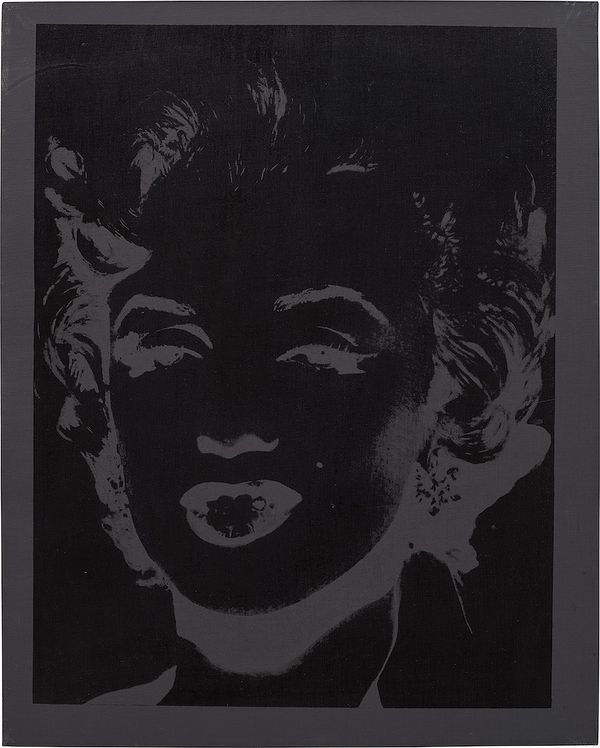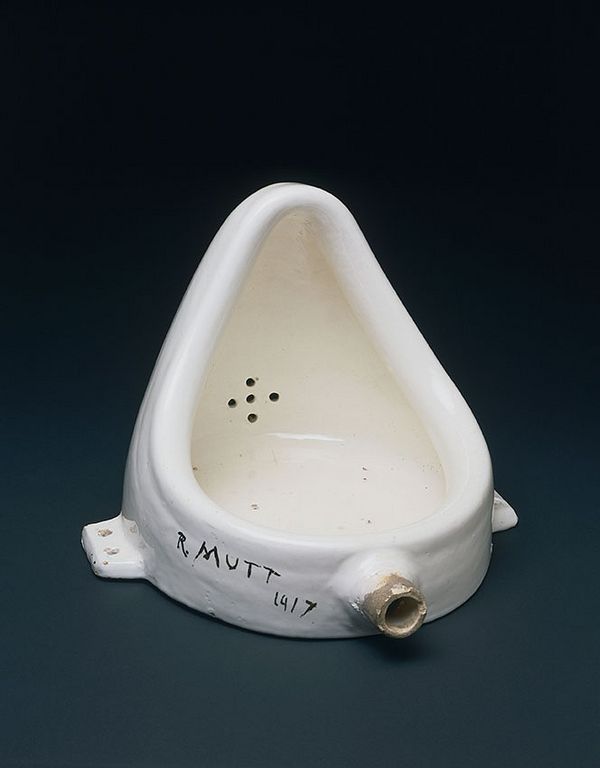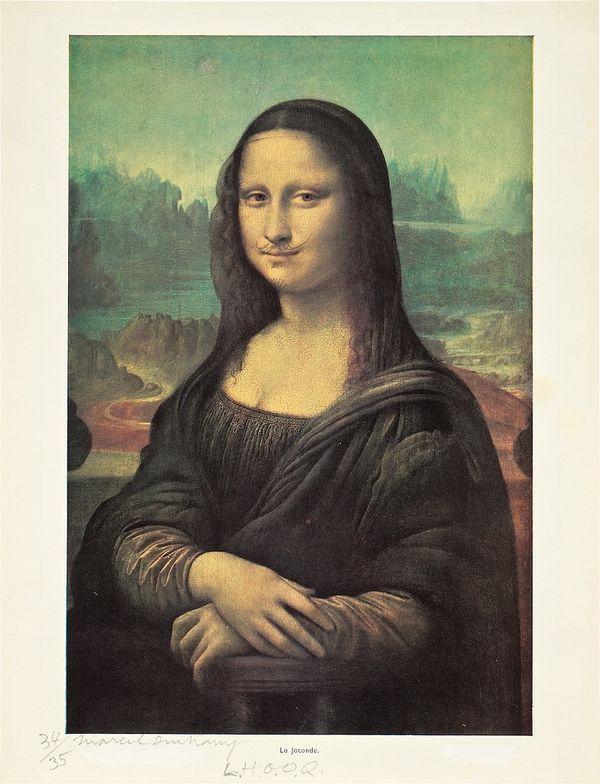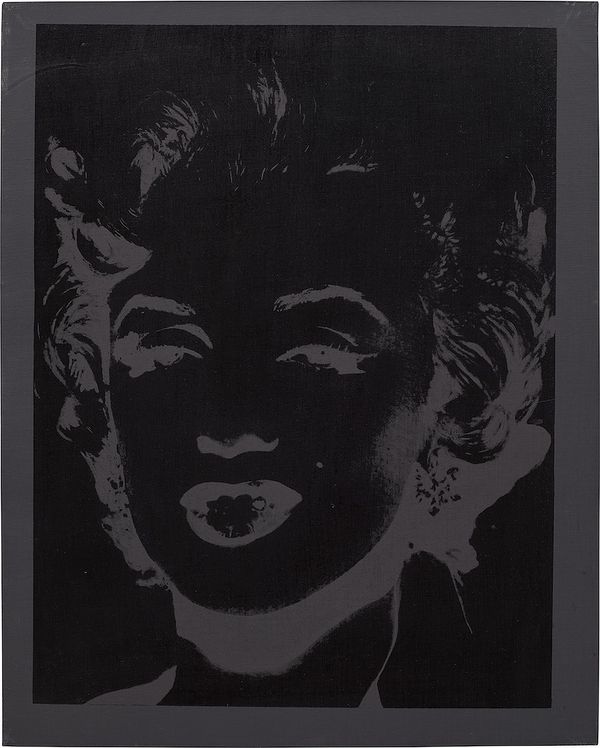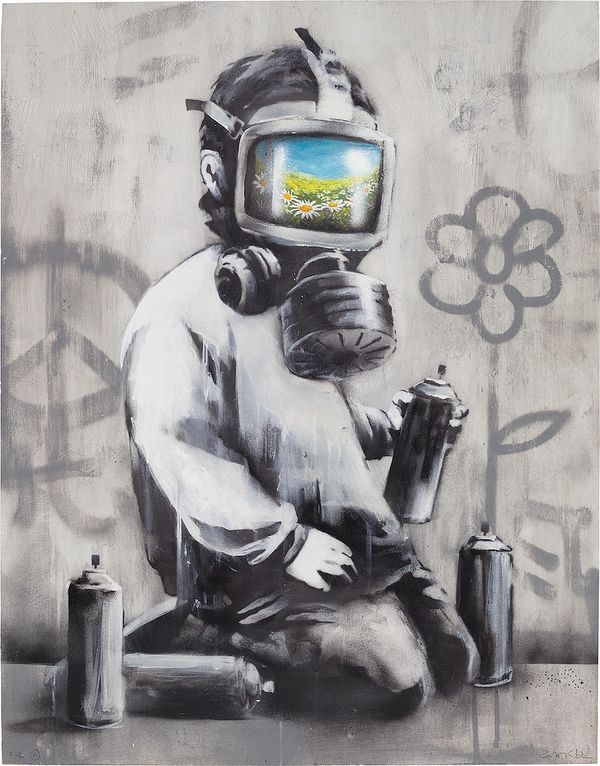Andy Warhol, Marilyn (Reversal), 1979/86. Estimate £700,000 — 900,000. 20th Century & Contemporary Art London.
In 1917, during the midst of the First World War, Marcel Duchamp pulled off one of art history’s most brilliant provocations. Under the pseudonym “R. Mutt,” he submitted his seminal work, Fountain, to the Society of Independent Artists’ salon. For the uninitiated: Fountain was a signed-and-dated upside-down urinal.
Although the Society of Independent Artists’ salon was jury-free, the board rejected the artwork, claiming “The Fountain may be a very useful object in its place, but its place is not in an art exhibition and it is, by no definition, a work of art.” Some even went so far as to call the object immoral.
Marcel Duchamp, Fountain, 1950. porcelain urinal, Philadelphia Museum of Art, Philadelphia. © 2021. Photo: The Philadelphia Museum of Art/Art Resource/Scala, Florence
Artists and intellectuals expounded on both sides. An anonymous editorial—later determined to be written by artist Beatrice Wood—articulated the importance of Duchamp’s so-called “readymade.” She wrote, “Mr. Mutt’s fountain is not immoral, that is absurd, no more than a bathtub is immoral…Whether Mr. Mutt with his own hands made the fountain has no importance. He CHOSE it. He took an ordinary article of life, placed it so that its useful significance disappeared under the new title and point of view—created a new thought for that object.”
Although the Fountain-incident occurred over a century ago, the debates around Duchamp’s approach to art-making maintain relevance, both within the context of his own oeuvre and the artists who have taken up his mantle. Artists that followed in his footsteps, like Andy Warhol and, more recently, Banksy, have become almost as divisive, leading to a string of art criticism that employs ample name-calling (popular terms include “overrated” and “hack,” some writers even like to implicate the artists’ fans; you are uncomplicatedly “bad” just for liking them).
But to dismiss Duchamp, Warhol, or Banksy is to sorely miss the point. These troublemakers-turned-titans have all transformed how we engage with art and popular culture, through simultaneously sophisticated and blunt wielding of the readymade. Each artist led/leads in the institutional critiques of their eras, using found objects to articulate and undermine greed, stuffiness, and inauthenticity masquerading as their opposites.
Marcel Duchamp, L.H.O.O.Q., 1964. Estimate £200,000 - 300,000. 20th Century & Contemporary Art London.
We continue with another important Duchamp example, L.H.O.O.Q, the artist’s embellishment of Mona Lisa. A celebrity in her own right, Leonardo da Vinci’s masterpiece represents not only a Renaissance treasure but the culture that upholds her as such. In his tableau dada, as inscribed below one rendition of the portrait, he added a mustache, goatee, and the salacious L.H.O.O.Q label (in French, the letters read phonetically as “Elle a chaud au cul,” or, as Duchamp put it, “There is a fire down below”).
Duchamp’s embellishments, it is worth adding, are not particularly novel—they are the vandalizations to which so many children resort when mocking a magazine cover or historical figure. Their power, as with Fountain, resides in his choice, which evocatively projects the sixteenth-century painting as an emblem of a kind of crowd-sourced secular saint. The work, of course, also questions representations of gender, peeling apart another convention that is often unquestioned in its familiarity.
Andy Warhol, Marilyn (Reversal), 1979/86. Estimate £700,000 — 900,000. 20th Century & Contemporary Art London.
Scholars like Stephen Goldsmith have argued that without Duchamp’s experiments, “it is likely that the Pop Art celebration of everyday objects…might never have occurred.” Warhol, like Duchamp, played with the relationship between fine art and its more democratized/commercial/popular cousins, as he imbued commercial objects with new meaning. As Warhol claimed, “Everything repeats itself. It’s amazing that everyone thinks that everything is new, but it’s all repeat.”
In his portrayals of Marilyn Monroe, Warhol took these ideas beyond literal objecthood and translated them to a woman whose celebrity rendered her fatally objectified. The ethereal, One Grey / Black Marilyn (Reversal Series) II-50-160, explores her absence through its subtle reversal. Like Mona Lisa (which Warhol—and Banksy—also treated), Marilyn Monroe’s celebrity became so unwieldy that collective obsession with her life outpaced her actual personhood. Exploring both the polished veneer of celebrity and its inherent darkness, Warhol thus differs slightly from Duchamp. Warhol’s target is much larger than his predecessor’s: it is the collective psychological complexity (or simplicity?) that makes these objectifications possible.
Banksy, Gas Mask Boy, 2009. Estimate £1,600,000 - 2,000,000. 20th Century & Contemporary Art London.
In our own moment, we have Banksy, the street artist, painter, and activist who approaches the readymade with still more purpose—not just tackling our hypocrisies and the reasons we perpetuate them but wielding his own celebrity for common good. For Banksy, the world itself is a readymade, requiring a spotlight because our familiarity has rendered us willfully oblivious to its failings.
In Gas Mask Boy, a crouching child in a respirator mask turns away from what he is spray-painting: a peace-sign, a simple flower, all in greyscale. The panel of his mask has been replaced with the platonic ideal of a flower field, daisies arrayed like a screensaver or a scene in a feel-good family musical. The gasmask has associations with the First World War—its total, chemical, biological warfare—as well as with protests—activists who wear masks as protection against undue police force. Here, Banksy addresses the paradoxes of what actions are policed and what the state sanctions, contrasted against the optimism and ideals portrayed on the boy’s mask.
From Duchamp, Warhol, and Banksy, we can—not without some irony—also pull out essential cultural figures from their periods. The visuals they weaponize as readymades are ultimately proof of the objects’ cultural value. Each example—Mona Lisa, Marilyn Monroe, the street—is just as relevant now as the time in which it was made, and so we understand the artists’ meanings with more than just hindsight; we understand empathically. In this, we also see that while “its useful significance disappeared under the new title and point of view,” its old significance lives on elsewhere. The significance multiplies, which is, perhaps, why we need the repeat exposure—and why Banksy’s open-air, high-visibility artworks may be the most important articulation of these ideas yet.
Discover More from 20th Century & Contemporary Art Evening Sale >
Banksy ‘Gas Mask Boy’ | London | Spring 2021
Dark humour, satire and political commentary are more present than ever in this one-off work by the anonymous street artist, painter and social activist Banksy. Displaying trademark conceptual paradoxes, the respirator mask of a graffiti artist reflects an ethereal vision of a blooming field, adding an explosion of colour to an otherwise grittily monochrome urban scene.
Recommended Reading
Elvis, Eggleston, and the Sounds of the City >
